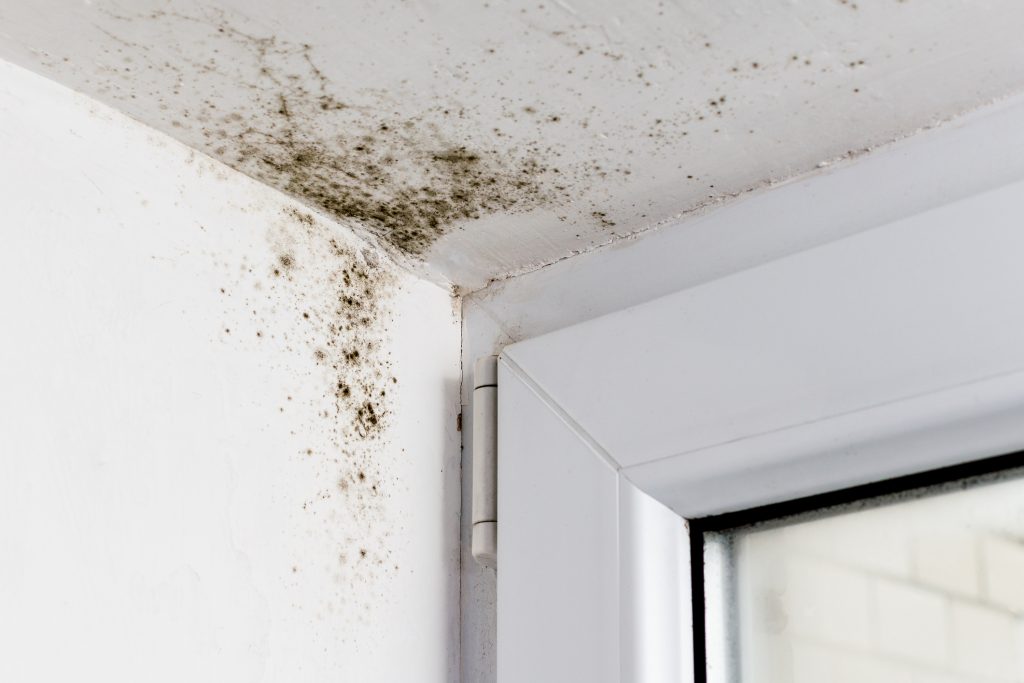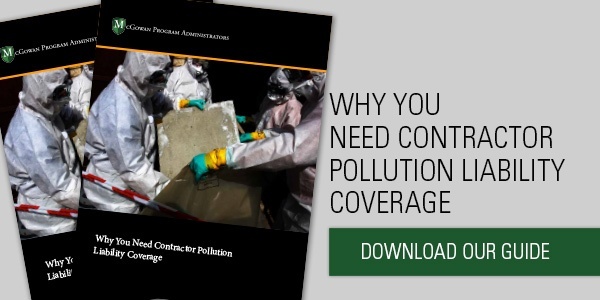Mold is a destructive nemesis for the construction industry and it has caused numerous problems for all kinds of contractors ranging from electricians to HVAC to roofers to environmental remediation. When it comes to mold-related issues, mold doesn’t discriminate. For this reason, it is vital that contractors across all segments and their insurance brokers consider their potential mold exposures and create a risk management program to effectively address these risks.
What exactly is mold?
The first thing that all contractors must realize is that mold is everywhere. It is a living organism that reproduces through its spores when introduced to moisture. To grow, mold needs a food source (wood, carpeting, drywall, wall coverings, etc.), the optimal temperature, and — most importantly — water.
To date, the number of mold varieties has not been determined. Estimates are there are hundreds of thousands if not millions of different species of mold. For this reason, it is important to understand no single process or cleaning chemical will kill all types of mold.
As a result, the U.S. EPA has never set regulatory limits for mold. The fact remains that some molds are potentially harmful to the health of people and pets (causing allergic reactions, difficulty breathing, asthma attaches, etc.) while people consume other types of mold (cheese or mushrooms) all the time.
The EPA states there is no practical way to remove all mold and mold spores from an indoor environment. The only way to control mold growth is through the control of moisture within the indoor environment. This can mean either eliminating sources of moisture or reducing humidity levels to the 30-60% range.
Mold is gold
Starting in the late 1990s and early 2000s, there was an explosion of mold claims. Many trial attorneys saw mold as the next asbestos and attempted to capitalize on mold litigation, hence, the phrase “mold is gold” from many insurance claims adjusters, underwriters, and brokers. Although mold claims have not impacted the insurance market to the level of asbestos, claim payouts have been sizable, and the approach to how carriers handle mold coverage has certainly been impacted.
While there were numerous high profile mold cases dating as far back as 1990, the highest profile case was in 2003 and involved Ed McMahon, the longtime sidekick on The Tonight Show with Johnny Carson. In this case, mold was the culprit of a $7.2 million settlement. A massive mold infestation at McMahon’s Beverly Hills mansion sickened him, his wife, and their house staff, the Los Angeles Times reported. Mold also killed the family dog and made the home unlivable.
It all started with a burst pipe that flooded the home’s den. Mold got into the heating and cooling ducts and soon infested the entire house. The damage embroiled the McMahons, their insurance companies, and their environmental contractors in lengthy, expensive litigation.
The high profile nature of this case certainly helped to bring mold further into the limelight. It also further impacted how mold exclusions were utilized on both Property and Liability insurance policies. The first standard mold exclusion was introduced in early 2002, and its use was certainly increased dramatically as this claim grew in the media.
The McMahon case exemplifies why contractors of all types cannot afford to underestimate the risks of mold damage. Contractors or subcontractors who inadvertently promote the growth of mold — even without knowing it — can face punishing liability.
How mold grows and why it’s so harmful
Mold spores naturally float in the air, looking for warm, moist places to land and reproduce. When mold grows, it stains surfaces and generates off-putting odors, both of which are extremely difficult to eliminate. As the McMahon case illustrates, HVAC systems can easily distribute a small area of mold to every corner of a building.
Mold feeds on organic substances in building materials, especially wood. This makes mold a severe threat to the strength and stability of walls, ceilings, roofs, floors, and doors in millions of buildings. Mold can eat natural fibers in carpet and organic components in flooring adhesives. And without proper ventilation, growth occurs rapidly and often unabated.
Examples of contractors’ liability in mold cases
Mold losses can impact any variety of different contractors. For example, roofing and window installation contractors have been involved in litigation for faulty work resulting in water intrusion and mold problems.
HVAC contractors have seen a sizable increase in claims activity. Improper installation of drip pans and their drains have caused mold to quickly spread throughout buildings and schools.
Maintenance and janitorial contractors hired by school systems to maintain and clean buildings during the summer. These contractors have decided to turn off air conditioning units in order to save money. Unfortunately, the lack of AC increased the humidity inside the schools and helped promote the mold growth.
Finally, one of the most vulnerable contractors is a plumber due to the fact that they deal directly with water sources. Improper installation of piping or valves can have dire consequences when it comes to mold and mold growth.
Electricians are not exempt either, as they could easily drill a hole for an electrical conduit and puncture a pipe, flooding a floor.
A major issue with mold is that its damage may not be noticed immediately. It often begins growing in hidden areas — behind walls, under wall coverings, beneath carpeting, within HVAC ducts — and by the time one smells the odors and realizes there may be a problem, the resulting damage and liabilities can be enormous.
In the end, mold claims are continuing to increase. This phenomenon is especially true today as the U.S. economy is strong and people are making capital investments in new buildings or renovations. The discovery of mold and the resulting property damage, bodily injury, and clean up costs are sizable.
The importance of managing mold risk
Insurance for mold liability is a tricky business because property and liability coverages typically exclude mold damage, so coverage of these exposures has shifted to self-insurance or other policies such as environmental.
These kinds of policies also have multiple exclusions, so contractors and their brokers must read all the fine print and make sure they understand exactly what’s covered and what isn’t.
The risks of mold are easy to understand, but the means of addressing them are slightly more challenging.
All these challenges illustrate why it’s crucial for contractors and their brokers to partner with an insurance provider who can match them with the right policy for their specialty filling potential gaps in their insurance program.
Talk to the experts at McGowan Program Administrators and let us help you find a policy that protects your business from the financial, legal, and reputational damage mold can cause.



